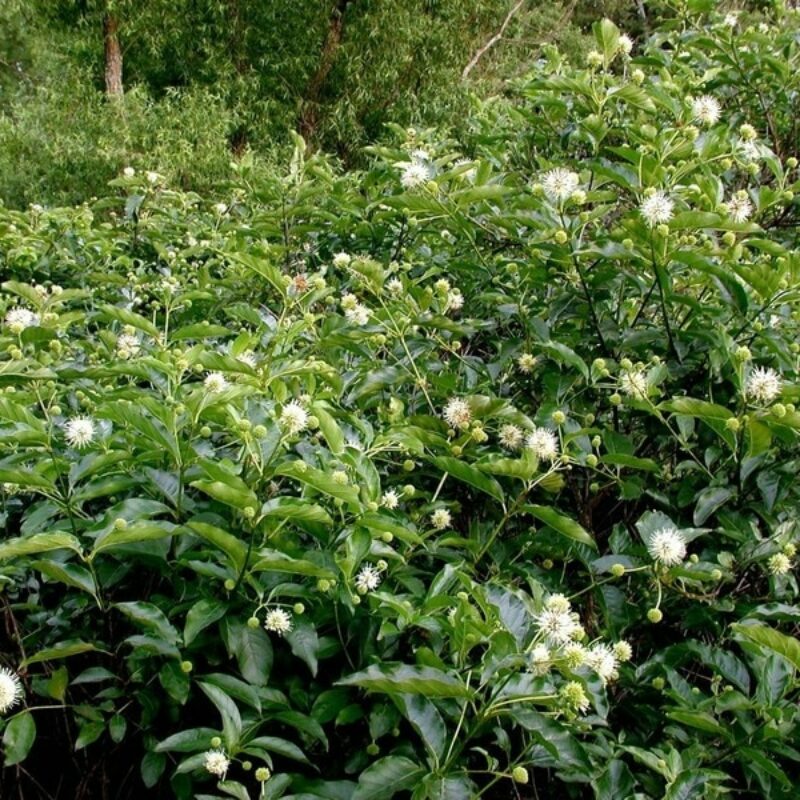ButtonbushCephalanthus occidentalis
A spreading, aquatic shrub or sometimes small tree with many branches (often crooked and leaning) and an irregular crown. This shrub can form dense thickets 3-12' tall. Used in streambank stabilization and in upper and lower shoreline zones. It is a nice landscape plant if allowed to be aggressive and soil moisture is maintained. A good plant for wetland restorations, especially in flood plain forests, meadows, thickets and stream banks.
USDA symbol: CEOC2
General Information
| Plant Type | Shrub |
|---|---|
| Height | 12 feet |
| Light Exposure | Sun, Part Sun |
| Soil Moisture | Medium |
| Bloom Color | White |

Tolerances
| Flooding / Inundation Tolerance | Very High |
|---|---|
| General Resilience | 7 |
| Salt Tolerance | Low |
| Stress Tolerance | Drought Tolerant, Fire Tolerant |
Pollinator Value: Very High
| Bloom Months | June to August |
|---|---|
| Pollinator Benefit | Insect Pollinated, Provides Nectar |
Project Planning
| Project Type | Erosion Control, Restoration, Sandy or Engineered Soils |
|---|---|
| Coefficient of Conservatism | 5 |
| Herbivore Sensitivity | Medium |
| Lifespan | Perennial |
| Rate of Spread | Fast |
| Soil Stabilization | Deep |
| Vegetative Reproduction | Absent |
Range
| County | Chisago, Houston, Pine, Ramsey, Rice, Wabasha, Washington, Winona |
|---|---|
| Ecoregion | Driftless Area, North Central Hardwood Forests, Northern Lakes and Forests, Western Cornbelt Plains |
| Approximate Eco Province | Eastern Broadleaf Forest, Laurentian Mixed Forest, Prairie Parkland |
